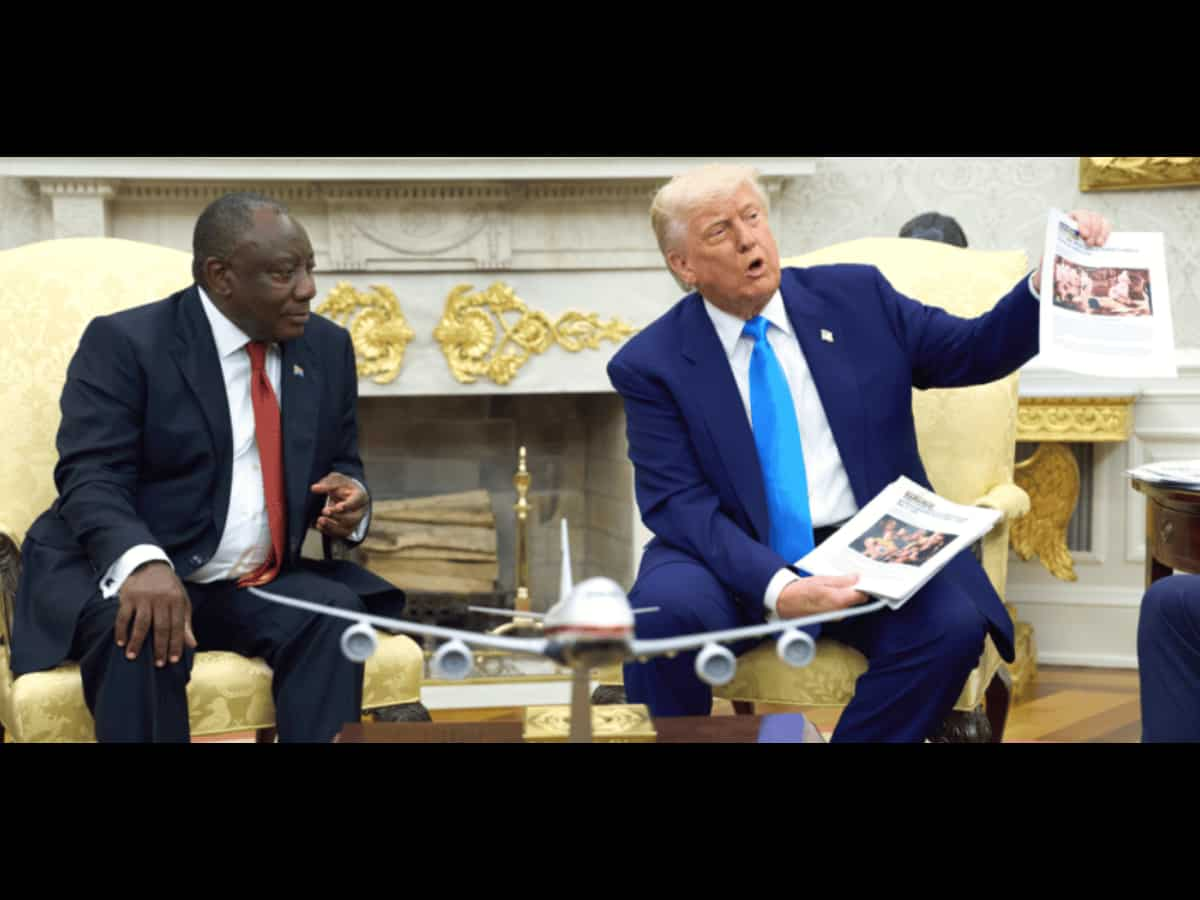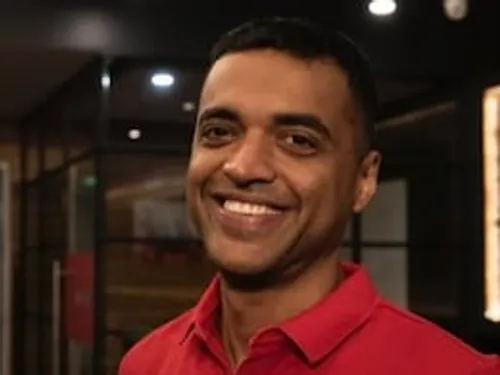US President Donald Trump used a high-profile White House meeting to launch a direct attack on South African President Cyril Ramaphosa, accusing the country of ignoring what he described as a “genocide” of white farmers—an assertion widely debunked by experts, AP reported.
In a dramatic moment, Trump dimmed the lights in the Oval Office to play a video of controversial opposition leader Julius Malema singing the disputed lyrics “kill the farmer.” He then pointed to a stack of news articles to press his claim that white farmers in South Africa face “death, death, death, horrible death.”
US aid to South Africa cut, white farmers welcomed as refugees
Trump had already frozen all US assistance to South Africa earlier this year. He also welcomed dozens of white South African farmers to the United States as refugees, making the case that the country’s Black-led government was engaged in systematic racial persecution.
The president has accused South Africa of seizing land from white landowners, promoting antiwhite policies, and embracing an anti-American stance in foreign affairs.
Experts and civil rights groups in South Africa have refuted these claims, pointing out that while the country does struggle with violent crime, there is no evidence to suggest white farmers are being targeted because of their race.
“People are fleeing South Africa for their own safety,” Trump said. “Their land is being confiscated and in many cases they’re being killed.”
Ramaphosa rebuts claims, calls Trump’s accusations inaccurate
President Ramaphosa, who had hoped to use the meeting to strengthen diplomatic ties, was caught off guard by Trump’s aggressive stance. He rejected the US leader’s claims outright.
“We are completely opposed to that,” Ramaphosa said of the behavior alleged by Trump in their exchange. He added, “that is not government policy” and “our government policy is completely, completely against what he was saying.”
Trump, however, refused to back down. “When they take the land, they kill the white farmer,” he repeated.
Oval Office theatrics and disputed visuals
The encounter began with Trump introducing Ramaphosa as “a truly respected man in many, many circles” but added that “in some circles he’s considered a little controversial.” Ramaphosa, smiling, replied, “We’re all like that.”
Trump then played videos on a large TV screen, including footage of Malema leading the controversial anti-apartheid song “kill the Boer.” Malema, although a high-profile figure, is not part of South Africa’s governing coalition.
Another video showed a roadside memorial of white crosses said to represent slain white farmers. Ramaphosa looked confused. “I’d like to know where that is, because this I’ve never seen.”
Executive order deepens diplomatic rift
In February, Trump signed an executive order slashing all US aid to South Africa, criticising the government for domestic “antiwhite” policies and its support for “bad actors” like Hamas and Iran.
The administration has doubled down on rhetoric that echoes previous remarks made by Trump’s South African-born adviser Elon Musk and some US conservative voices, suggesting the South African government is enabling violence against white Afrikaners.
The South African government, in response, has dismissed these accusations as misinformation, clarifying that no land has been seized under its proposed expropriation laws and that all racial groups are affected by crime in the country.
(With inputs from AP)
Anurag Dhole is a seasoned journalist and content writer with a passion for delivering timely, accurate, and engaging stories. With over 8 years of experience in digital media, she covers a wide range of topics—from breaking news and politics to business insights and cultural trends. Jane's writing style blends clarity with depth, aiming to inform and inspire readers in a fast-paced media landscape. When she’s not chasing stories, she’s likely reading investigative features or exploring local cafés for her next writing spot.






